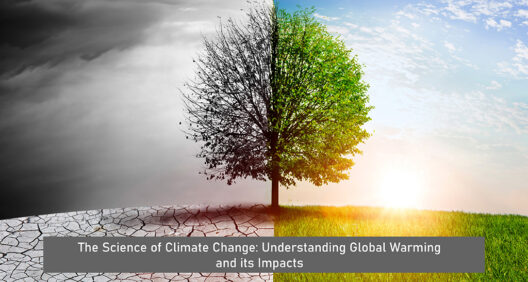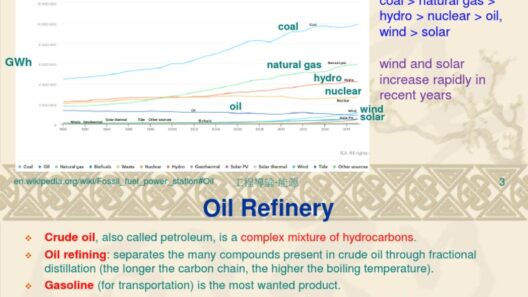Energy conservation plays a pivotal role in mitigating air pollution, serving as a cornerstone in the quest for cleaner air and a healthier environment. The nexus between energy conservation and air quality is multifaceted, encompassing a variety of energy sources, consumption patterns, and technological innovations. By understanding these interconnections, we can appreciate how energy conservation can lead to a substantial reduction in air pollutants.
Firstly, let’s explore the significance of energy consumption. In modern society, fossil fuels such as coal, oil, and natural gas remain the predominant sources of energy. During combustion, these fuels release an amalgam of pollutants, including nitrogen oxides (NOx), sulfur dioxide (SO2), particulate matter (PM), and volatile organic compounds (VOCs). Each of these pollutants has been linked to a myriad of health problems, ranging from respiratory diseases to cardiovascular complications. Energy conservation—through methods such as efficient appliances, better insulation, and optimized industrial processes—directly correlates with a decrease in fossil fuel reliance and the concomitant reduction of these pollutants.
Take, for instance, the utilization of energy-efficient appliances. These devices, designed to use significantly less energy than their traditional counterparts, not only lower electricity bills but also diminish the demand for energy production. As we conserve energy by switching to LED lighting or Energy Star-rated appliances, the reliance on fossil fuel power plants decreases. Consequently, this leads to less combustion and fewer emissions, resulting in cleaner air.
The second avenue through which energy conservation assists in air quality improvement is public transportation. The transportation sector is a significant contributor to urban air pollution, primarily due to the emissions from motor vehicles. By conserving energy through enhanced public transport options, carpooling, and biking initiatives, we can reduce the number of vehicles on the road. This reduction translates into lower emissions of carbon monoxide (CO), hydrocarbons, and NOx, which are notorious for degrading urban air quality. Cities that prioritize energy conservation through sustainable transport initiatives witness a notable improvement in air quality metrics.
Moreover, energy conservation fosters the integration of renewable energy sources, such as solar, wind, and hydroelectric power. Unlike fossil fuels, renewables typically generate electricity without emitting harmful air pollutants. By investing in and utilizing renewable energy systems, society can drastically reduce the amount of toxins released into the atmosphere. The transition to renewables often encourages advancements in energy storage and transmission technology, further reducing dependency on polluting energy sources. This systemic shift not only supports cleaner air but also enhances energy security and resiliency against climate change.
However, the benefits of energy conservation extend beyond just environmental impacts; they also encompass economic advantages. The financial burden of health care attributable to polluted air is staggering. Unquantifiable costs stem from lost productivity due to illness caused by air pollution, as well as expenditures associated with treating respiratory and cardiovascular diseases. By investing in energy conservation strategies, communities can reap long-term fiscal benefits, saving on health care costs and enhancing quality of life.
One compelling example of energy conservation at work lies in the realm of industrial practices. Industrial facilities contribute significantly to air pollution. Implementing energy conservation measures—such as energy audits, process optimization, and waste heat recovery—can lead to significant reductions in emissions. Industries that embrace energy efficiency not only become more competitive but also contribute positively to public health by alleviating the burden of air pollution. The adoption of pollution control technologies, when combined with energy efficiency, represents a holistic approach to improving air quality.
Despite these plentiful benefits, the discourse surrounding energy conservation must also address potential challenges. Behavioral resistance and systemic inertia can hinder the widespread adoption of conservation practices. Public awareness campaigns and educational initiatives can play critical roles in changing perceptions and behaviors surrounding energy use. When communities recognize the interconnectedness of their energy consumption habits and air quality, they are more likely to engage in conservation efforts. The empowerment of individuals through education can create a ripple effect, amplifying efforts across various sectors.
Additionally, clean air policies and legislation are paramount in facilitating energy conservation efforts. Governments must enact and enforce regulations that promote energy efficiency in buildings, vehicles, and industrial processes. Financial incentives, such as tax credits for purchasing energy-efficient technologies or grants for retrofitting buildings, can further stimulate investment in conservation measures. As policy frameworks become more robust in supporting conservation initiatives, the road to cleaner air becomes less cumbersome.
In conclusion, energy conservation is not merely an environmental necessity; it is an imperative for public health, economic sustainability, and climate resilience. From reducing emissions associated with fossil fuel combustion to promoting cleaner alternatives, energy conservation offers a comprehensive strategy for tackling air pollution. Cleaner air starts on the individual level, empowered by collective actions and informed by public policy. Only through cooperative engagement can we aspire to achieve the ultimate goal—a world where clean air is not just an aspiration but a reality.
As we advance in this effort, each action we take towards energy conservation will significantly impact our environment. Engaging in practices that prioritize sustainability, making conscious choices about energy use, and advocating for responsible policies will enable us to contribute positively to air quality, health, and planetary ecosystems. The trajectory toward a more breathable atmosphere is a shared responsibility, calling for deliberate and sustained action.







